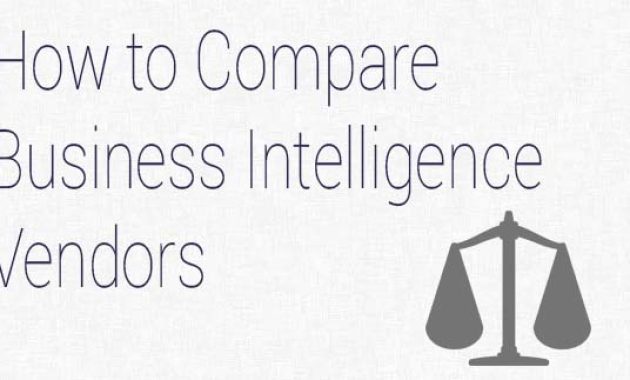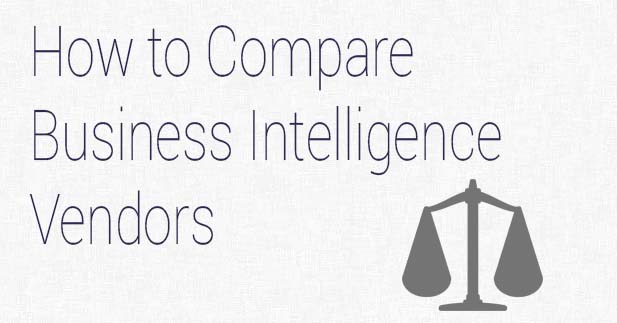
How to Compare Business Intelligence Software the Smart Way: A Comprehensive Guide
The business landscape is evolving rapidly. Data is the new currency. Businesses are constantly seeking ways to gain a competitive edge. Business intelligence (BI) software has become an indispensable tool. It empowers organizations to analyze data, identify trends, and make informed decisions. But with a plethora of options available, choosing the right BI software can be daunting. This guide provides a smart approach to compare business intelligence software effectively.
This article will explore the key factors to consider. We will outline a step-by-step process to evaluate different BI solutions. We will also highlight the importance of aligning your choice with your specific business needs. The goal is to equip you with the knowledge and tools to make an informed decision. This ensures you select the best business intelligence software for your organization.
Understanding Your Needs: The Foundation of Smart Comparison
Before diving into software features, assess your organization’s specific requirements. This is the crucial first step. It helps you narrow down your options. It also ensures you select a solution that delivers real value. This phase involves several key considerations.
Define Your Business Goals
What are your primary objectives for implementing business intelligence software? Are you looking to improve sales forecasting? Do you want to optimize marketing campaigns? Perhaps you aim to enhance customer service? Clearly defined goals provide a framework for evaluating software capabilities. They also help you measure the success of your BI implementation.
Identify Your Data Sources
Where does your data reside? Is it in spreadsheets, databases, or cloud platforms? Knowing your data sources is vital. It helps determine which software solutions offer the necessary connectors. These connectors will integrate seamlessly with your existing infrastructure. Consider the volume, velocity, and variety of your data. This will help you choose software that can handle your data effectively.
Determine Your Reporting and Analytics Needs
What types of reports and analyses do you require? Do you need interactive dashboards? Do you need ad-hoc reporting capabilities? Do you need advanced analytics features like predictive modeling? Identify the specific types of insights you need to gain. This helps you prioritize features when comparing business intelligence software.
Assess Your Technical Capabilities
What is your team’s technical expertise? Do you have data analysts, or will users need self-service capabilities? Consider the ease of use and the level of technical support offered. This will help you choose software that aligns with your team’s skills. It also needs to match the resources available.
Key Features to Evaluate in Business Intelligence Software
Once you understand your needs, focus on the features of different software options. Several key features contribute to the effectiveness of a business intelligence software solution.
Data Integration and Connectivity
The ability to connect to various data sources is crucial. Look for software that supports a wide range of connectors. These include databases, cloud platforms, and other relevant applications. Ensure the software can handle your data volume and format. This will streamline data extraction and transformation.
Data Visualization and Dashboards
Effective data visualization transforms raw data into actionable insights. Evaluate the software’s ability to create interactive dashboards. They should display key performance indicators (KPIs) clearly. The dashboards should be customizable. They should also offer a variety of chart types and visualization options.
Reporting and Analysis Capabilities
The software should provide robust reporting features. Look for options to create custom reports and ad-hoc analyses. Consider features like drill-down capabilities and data filtering. These features will allow users to explore data in detail. They will also help them uncover trends and patterns.
Self-Service BI and User Experience
Self-service BI empowers business users to access and analyze data. Evaluate the software’s ease of use and intuitive interface. Consider the availability of drag-and-drop functionality. This will make it easier for non-technical users to create reports. It will also make it easier for them to build dashboards.
Advanced Analytics and Predictive Modeling
For organizations seeking advanced insights, consider the software’s analytics capabilities. Look for features like statistical analysis, machine learning, and predictive modeling. These features can help you forecast future trends. They can also optimize business processes. They can provide a competitive advantage.
Collaboration and Sharing
Effective collaboration is essential for informed decision-making. Evaluate the software’s ability to share reports and dashboards. Look for features like commenting and annotation. These features will facilitate communication and collaboration among team members.
Security and Data Governance
Data security is paramount. Ensure the software offers robust security features. These should include user authentication, access controls, and data encryption. The software should also comply with relevant data privacy regulations. These include GDPR and CCPA.
A Step-by-Step Comparison Process
Now that you know what to look for, here’s a step-by-step process. This will help you compare business intelligence software effectively.
Create a Shortlist of Potential Vendors
Research various business intelligence software providers. Consider industry reports and user reviews. Create a shortlist of vendors that seem to align with your needs. Focus on those with a strong reputation and relevant experience.
Request Demos and Trials
Contact the shortlisted vendors and request product demos. This will give you a firsthand look at the software’s features. Take advantage of free trials to test the software with your own data. This will assess its performance and usability.
Evaluate Based on Your Criteria
Use the criteria you defined earlier. Evaluate each software option against your needs. Create a scoring system to objectively compare the different options. This will help you identify the best fit for your organization.
Consider Total Cost of Ownership (TCO)
Don’t just focus on the upfront cost. Consider the total cost of ownership (TCO). This includes implementation costs, training expenses, and ongoing maintenance fees. Factor in the potential return on investment (ROI). This will help you make a financially sound decision.
Check References and Reviews
Talk to existing customers of the software. Ask about their experience with the vendor and the software. Read online reviews and testimonials. This will provide valuable insights into the software’s strengths and weaknesses.
Make Your Decision and Implement
Based on your evaluation, choose the business intelligence software that best meets your needs. Develop an implementation plan and train your team. Monitor the software’s performance and make adjustments as needed. This will ensure you maximize its value.
Common Pitfalls to Avoid
When comparing business intelligence software, avoid these common pitfalls.
- Overlooking Your Needs: Don’t choose software based on its features alone. Always prioritize your specific business requirements.
- Focusing Solely on Price: Low-cost software may lack the features or support you need. Consider the TCO and ROI.
- Ignoring User Experience: Choose software that is easy to use and intuitive. This will ensure user adoption.
- Failing to Test the Software: Always test the software with your own data. This will assess its performance.
- Not Considering Support: Ensure the vendor provides adequate training and support. This will help you resolve any issues.
The Benefits of Choosing the Right Business Intelligence Software
Selecting the right business intelligence software offers numerous benefits. It can transform your organization’s decision-making process.
- Improved Decision-Making: Gain access to real-time data and actionable insights. Make informed decisions based on data.
- Enhanced Efficiency: Automate reporting and analysis tasks. Free up your team to focus on strategic initiatives.
- Increased Revenue: Identify new opportunities and optimize sales and marketing efforts. Drive revenue growth.
- Reduced Costs: Identify inefficiencies and optimize operations. Reduce unnecessary expenses.
- Competitive Advantage: Gain a deeper understanding of your business. Stay ahead of the competition.
Conclusion: Making the Right Choice for Your Business
Choosing the right business intelligence software is a strategic investment. It requires careful planning and evaluation. By following the smart comparison approach outlined in this guide, you can make an informed decision. You can also select the software that best meets your needs. This will empower your organization to thrive in today’s data-driven world. Remember to prioritize your business goals. Evaluate software features carefully. Conduct thorough testing. This will ensure you choose the right solution. This will unlock the power of your data. This will also drive business success. [See also: Related Article Titles]

